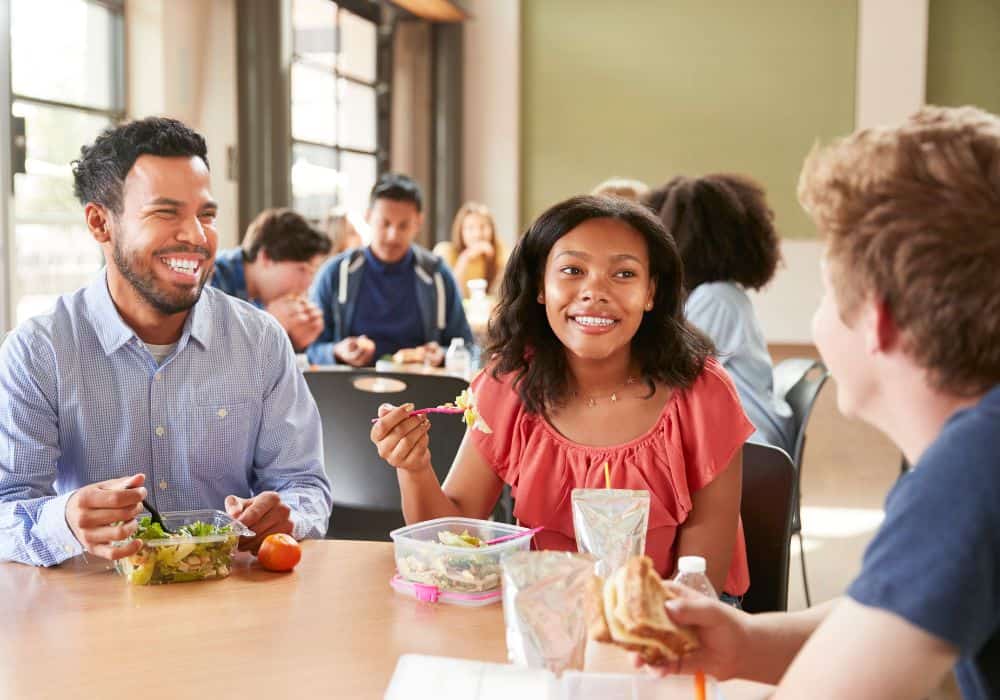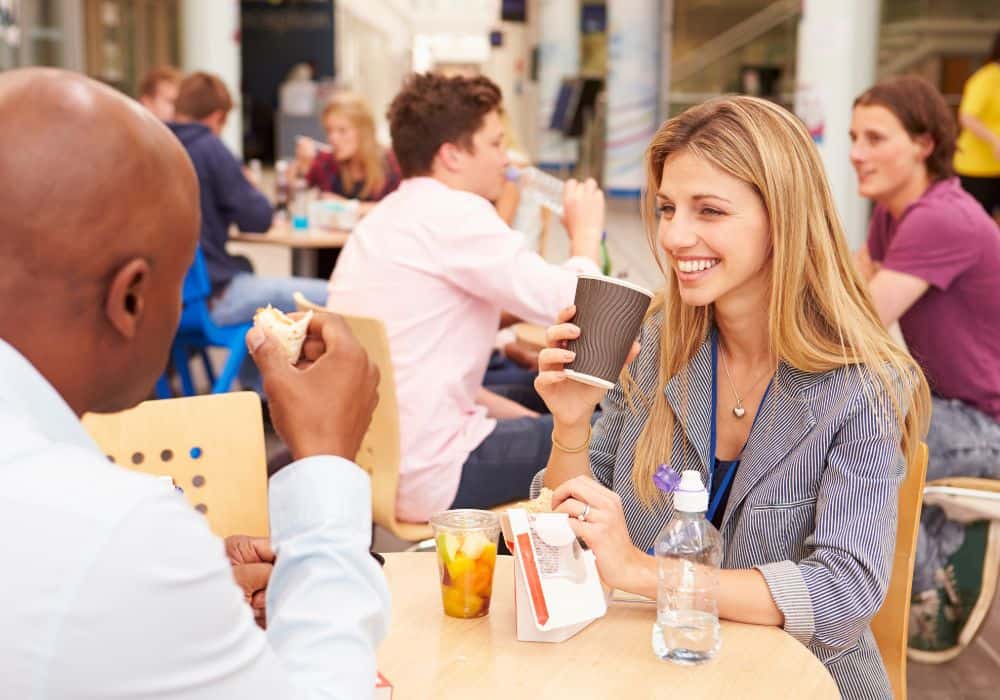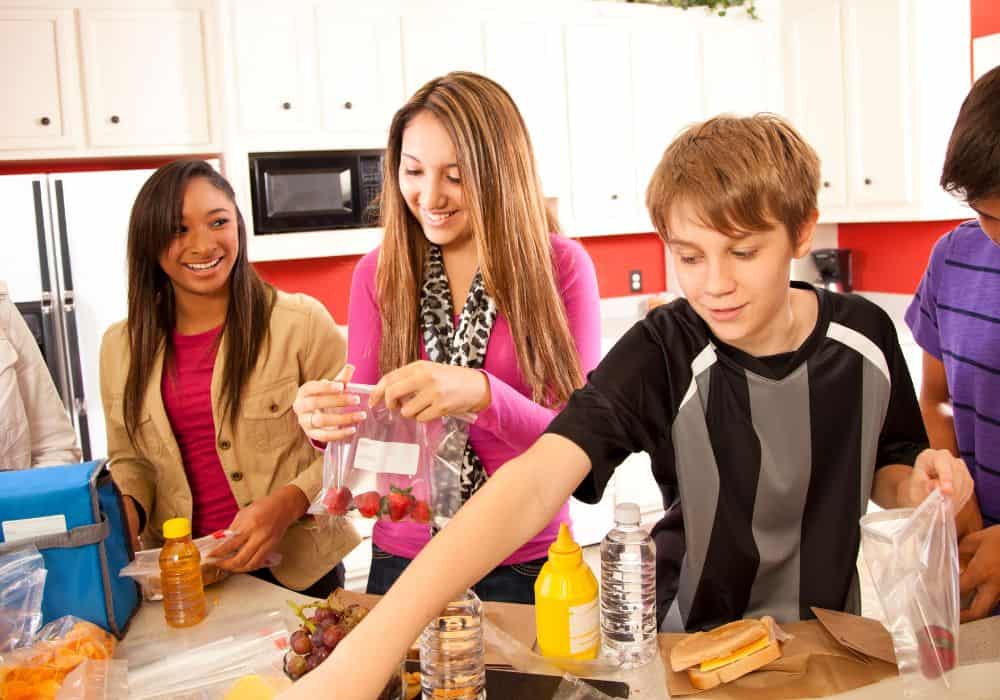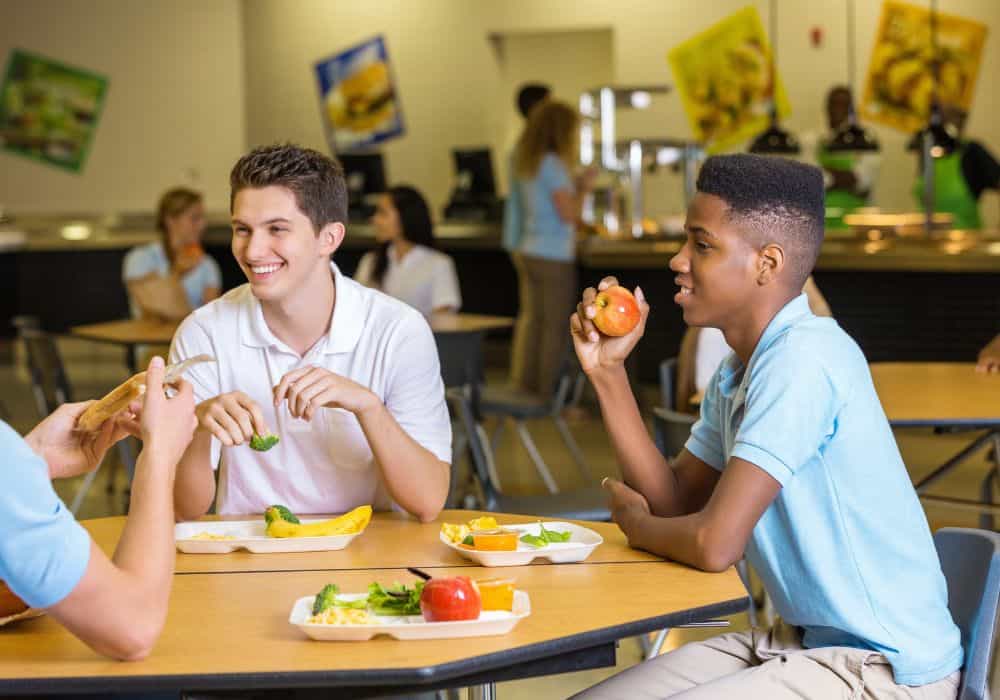
Lunchtime is more than just a break between classes; it is an integral component of student life that allows them to refuel, socialize, and form connections with one another. The school cafeteria (often called “food blocks”) is essential to the student community. We will examine its social aspects by exploring how food blocks create community among their student bodies by unifying groups through shared meals or culinary experiences and offering valuable life lessons far beyond its walls.
Table of Contents
Break from the Routine
School days for students can often be filled with classes, assignments, and exams. Lunchtime provides a much-needed respite from academic responsibilities and allows them to recharge for the rest of the day. Students often anticipate this break as a special treat each day!
The Gathering Place
A school cafeteria provides an ideal meeting spot for students from various backgrounds. Here, multiple grade levels, social circles, and interests converge – not only to eat but also to socialize, reconnect with old friends and meet new ones! Communal tables promote interaction among different student groups within its student body community.
Friendships and Social Bonds
Lunchtime provides students an ideal opportunity to build lasting friendships, whether trading snacks, trying out each other’s dishes, or simply sharing about their day – these interactions create lasting social ties and enrich the student’s experience beyond the cafeteria walls.
Cultural Exchange
In today’s diverse educational landscape, school cafeterias provide an exceptional forum for cultural exchange. Many schools feature an assortment of cuisines to accommodate students with various cultural backgrounds; these opportunities enable students to experience and appreciate multiple culinary traditions while broadening their horizons and deepening cultural understanding. Food becomes an avenue through which they can learn about and respect one another’s heritage.
Learning Outside the Classroom
Lunchtime isn’t only about nourishment; it’s an opportunity for informal learning as well. Students engage in discussions ranging from current events, pop culture, and politics – to critical thinking, debate, and exchanging ideas – helping foster intellectual development and gaining deeper insight into our world. The cafeteria serves as its own classroom, with discussions taking place throughout lunch.
Celebrating Diversity
Food blocks honor diversity in multiple ways. Through special events and themed lunches that highlight different cultures and traditions, students are exposed to all that global diversity offers them. By celebrating diversity through these celebrations, a sense of pride for one’s heritage while simultaneously encouraging tolerance and inclusivity are instilled within students.
Invaluable Life Lessons
Lunchtime provides students with invaluable life lessons that transcend the cafeteria. Students learn time management by juggling eating, socializing, and returning on time for class. Furthermore, sharing meals teaches empathy; additionally, it’s an exercise in decision-making: students select meals with different dietary restrictions or budget constraints and make choices accordingly.
Building Long-Lasting Memories
One of the fondest memories from school life may lie within lunchtime: birthday celebrations and treats from friends become lasting treasured moments that students cherish throughout their lives. Cafeterias serve as venues for laughter, camaraderie, and shared experiences that define student communities.
Strengthen Your Community
Lunchtime serves as a microcosm of our larger community. Here, students learn to navigate social dynamics, practice empathy, and find belonging. Their experiences help shape a stronger, more inclusive student community that values diversity while cultivating friendships that provide support through all aspects of school life.
Provide an Overflow Hub for Extracurricular Activities
Lunchtime often serves as the center for extracurricular activities and clubs, bringing students together in the cafeteria to plan events, discuss club activities, and share ideas. At these lunchtime meetings, members can brainstorm fundraising strategies for their clubs, organize community service projects, or prepare for competitions, turning the cafeteria into a hub of creativity and collaboration that allows students to pursue their passions outside the classroom.
Strengthening Social Skills
Lunchtime provides students with an ideal environment to refine their social skills. Through effective communication, active listening, and conflict resolution exercises in a bustling cafeteria environment, students develop vital abilities necessary for building and sustaining friendships as well as future personal and professional interactions. Furthermore, lessons gained during lunchtime interactions help build emotional intelligence and social adaptability within individuals.
Commemorating Achievements
Lunchtime provides the ideal opportunity for celebrating achievements and milestones, from commending sports teams on recent victories to applauding academic performance or celebrating birthdays – the cafeteria is often where these milestones are honored and applauded, providing students with an opportunity to support one another in community pride and uphold each other through celebrations such as these.
Fostering Inclusivity
Schools often try to ensure lunchtime is an inclusive experience for all students. Anti-bullying campaigns, peer support initiatives, and diversity programs often originate in the cafeteria; students unite in this endeavor so all can feel welcome during lunchtime and beyond.
Mentorship and Guidance
Lunchtime provides a casual environment in which mentorship and guidance can occur. Older students often play the role of mentor, offering advice, support, friendship, and guidance to younger peers who may be newer to school environments or academic journeys. Mentorship relationships help newcomers quickly adapt while serving as sources of guidance throughout their academic journeys. The same support can suggest an MBA essay writer on Speedy Paper if you want to pursue a career in strategic management.
A Source of Inspiration
Lunchtime can serve as a source of motivation for students. They may hear tales about classmates’ successes, talents, or passions during casual conversations. These tales of success may encourage and motivate others to pursue their goals and aspirations. Lunchtime serves as an inspirational reminder that our student body is filled with talented individuals, sparking an internal sense of ambition and determination that may motivate others towards reaching their own goals and aspirations.
Lunchtime in a school cafeteria (or food block) can be an enriching experience beyond mere sustenance. Students come together here to socialize, celebrate diversity, learn life lessons, and build stronger, more inclusive communities. From friendships formed over shared meals or cultural exchanges to extracurricular activities – lunchtime plays an essential part in student lives across schools, creating lasting connections, nurturing social skills development, and cultivating an extended sense of belonging that extends far beyond cafeteria walls – lunchtime acts like an anchor, threading together all aspects of student life bringing students together as one community woven together by lunchtime!


